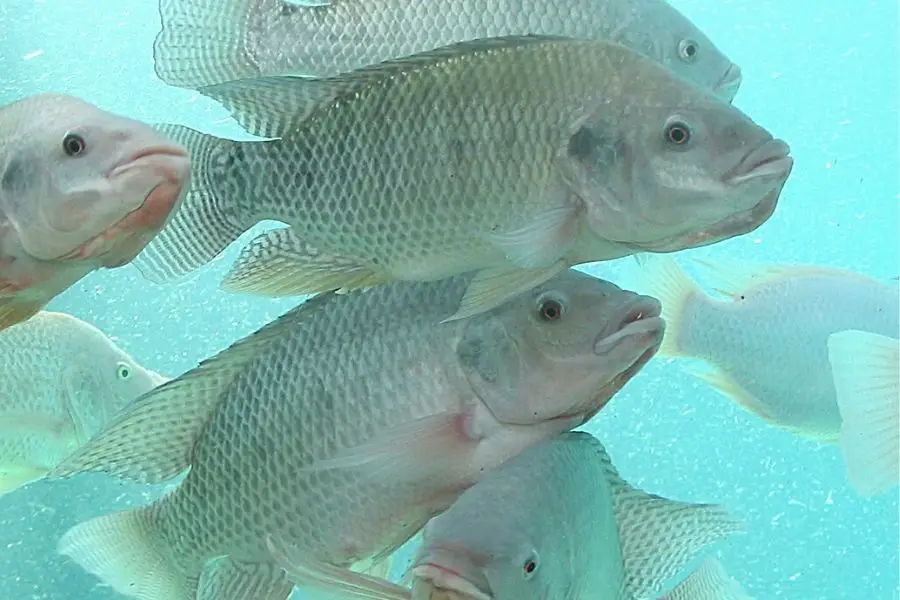Tilapia is one of those fishes that you can easily farm in your own backyard, and it can be a dependable food source for you. If you are looking to start tilapia farming and want to gain some knowledge about this fish before going forward, we have some general guidelines that should help you achieve a sustainable tilapia farming venture.
With that said, here is a list of six things you should know before starting Tilapia farming:
- 1Tilapia is a freshwater fish that needs pristine clear water
- 2You would want to use fertilizer at least a week before the fish is introduced in the pond or fish tank. They should be included at a young age, preferably
- 3The water temperature should not fall below 25°C.
- 4Tilapia is prone to develop diseases and needs constant parasite control
- 5Many predators feed on tilapia, such as eagles and mongooses
- 6Tilapia takes around seven months to harvest so plan accordingly
Once you understand the fundamentals of farming tilapia, you can avoid some common mistakes that beginners make. Knowing a few tips and tricks will help you along the way. Read on to explore more on these six facts about tilapia farming.

1. Tilapia Needs Clean Water
As stated earlier, tilapia is freshwater fish that thrives in shallow river streams, ponds, and lakes. They are less common in brackish water bodies.
This is certain, but it can be stressed enough: Fishes cannot withstand certain levels of chlorine or ammonia. Many municipalities treat their water supplies with chlorine and chloramine to make them apt for drinking. The water utilized for tilapia farming would have to be cleared of these substances almost entirely (if not completely).
Chlorine is detrimental to fish in a lot of ways. Fish exposed to this chemical could experience hypoxia and several neurologic problems that may impede correct swimming and body positioning. Gill necrosis and liver damage can also occur at higher chlorine concentrations.
In such cases, the most viable option is to filter the water using activated carbon or dechlorination systems (the latter if you plan on building a big tilapia farm).
The water can additionally be tested for any trace of mercury or lead. Detoxifiers should work to eliminate any trace of heavy metals or other toxic compounds present in the pond that could get your fish sick.
Even though tilapia could theoretically survive in brackish water - meaning water with a higher salinity than regular freshwater without reaching seawater levels - salt levels should remain below 18 ppt. The pH should not surpass 9 nor go lower than 7. Lastly, the alkalinity or acidity of the water can be controlled using pH regulators.
2. Fertilize the Pond and Stock Up
Tilapia loves algae. Algae are aquatic plants that provide oxygenation by photosynthesis and are considered food by many other water organisms.
In order to stimulate algal growth, some pond conditions must be met. The first thing you should determine is the spot you'll use to farm your tilapia. It should be a relatively spacious area (2.5m long, 1.2m wide, and 0.7m deep on average) with enough sunlight exposure. As you may already know, algae are known to struggle under the shade.
After choosing the desired spot, start fertilizing the soil or pond bed. Fertilizers are available in liquid form or granules. Generally speaking, liquid fertilizers are better for ponds, though not as readily available as granules in many places.
Granular fertilizers are not very practical for plankton or algae growth because the particles usually get stuck in the mud and, in the end, would not provide enough nutrients to the plankton.
The fertilizer should likewise be diluted with 10 parts water before being placed on the pond surface; otherwise, it will not mix correctly.
If no specialized fertilizer is easily accessible or if you're not able to afford it, you can use chicken droppings instead.
After that, you should do all you can to obtain your fingerlings (young tilapias) from a reliable supplier, restricting them to 5 fingerlings per square meter. You can also get ahold of pairs of broodstock if it's not possible to catch any younger ones.
3. Tilapia Needs The Right Lighting, Aeration, And Temperature
Tilapias are warm-water fishes that don't tolerate temperatures below 25°C. During the cold months, your pond should be equipped with a water heating mechanism that maintains optimal temperatures between 25-36°C.
One of the most cost-effective ways to maintain the proper temperature for tilapia raising is using a pond covering or greenhouse tunnel. It is worth noting that greenhouse tunnels could raise temperatures by about 6-8°C above the outdoor temperature. You could also get ahold of a conventional electric water heater, ensuring that it doesn't exceed 30 to 35°C.
If the water gets too hot, you can sprinkle ice or cold water to retain the adequate temperature range. During summer, you may benefit from placing a shade over the pond.
Lighting is also an important factor to consider in both tilapia and algae development. It's crucial that these organisms can enjoy at least 18 hours of light per day to allow for proper photosynthesis and fish activity.
It goes without saying that the best light source for tilapia and algae is the natural light from the sun. During summertime, a shade could aid in maintaining the proper temperature. However, you should still allow some light to pass through it.
In the evening, you can light up your pond using photosynthetically active radiation (PAR), perfect for aquaponic breeders. These sources limit the emission of damaging photons and only deliver wavelengths within a visible range for humans and fish. In the absence of PAR, you could use fluorescent lighting that emits wavelengths at a color temperature of 5,000 to 5,500 degrees Kelvin, which is roughly the same temperature as sunlight.
Finally, oxygen is required to maintain the fish and allow the aerobic bacteria to separate waste compounds such as ammonia. For this purpose, you could use a bubbler, fountain, or paddlewheel so that water moves and the air can get through its particles. Aeration devices such as bubblers also reduce the event of mosquito hatcheries forming on the pond's surface and balance the water's temperature.
4. You Need To Apply Parasite And Disease Control Mechanisms
Along with the "good" bacteria and the algae, worms and other kinds of parasites can find their way into your pond when it's not very hygienic. These small invasive creatures will take a toll on the quality of water, as well as the quality of the fish.
Some breeders would usually add non-iodized salt to elude the appearance of parasites in the water and control the nitrite levels. The ideal measure to prevent the development of most parasites is by adding one tablespoon of salt per gallon of water. Some parasites could still thrive with the use of this special salt. However, it's still far better than relying on common table salt, which is highly ineffective and can cause an inverse effect.
Elevated nitrite levels can prompt Brown Blood disease, which is basically nitrite poisoning. Nitrite is a compound that results from the breakdown of ammonia and can affect the circulatory system of fish. It's responsible for rendering a dark brownish color on the fish's blood (hence the moniker "Brown Blood").
Other diseases include Streptococcosis, Columnaris, and Trichodiniasis. The spread of diseases in a pond could completely destroy the farm-raised tilapia population, especially when it’s overcrowded.
5. Be Wary of Predators
If you live in an area where birds of prey abound, you should take the necessary precautions to reduce their chances of reaching your pond. It’s always beneficial to add meshes or nets over the pond to prevent contact between predators and tilapia, especially herons and eagles.
6. Harvest your Tilapia
Tilapia takes around 6 to 7 months before it’s ready to be harvested. This is the timeframe you should be looking for to have a continuous supply of fresh fish. You ought to be careful not to overcrowd your pond as these fishes tend to breed rapidly.
Tilapia can reach a weight between 450 and 600 grams as it matures. You should aim to harvest the most mature ones while the fingerlings keep going through their maturation stage. Normally, Mozambique tilapias attain sexual maturity faster and in shorter sizes than Blue or Nile tilapias.
Furthermore, these fishes reach larger sizes when raised in vast lakes and pools, but also mature at a correspondingly longer time. Males grow twice as fast as females and are the least desired gender in a pond due to overpopulation hazards.
Also, overcrowding in large fish farms is a common concern for many fish farmers.
One of the most efficient methods to avoid it is by placing nets or meshes with large enough holes. This allows eggs to pass through to the bottom of the pond before female tilapias can collect them for brooding.
Another tactic is to add a largemouth bass in the pond to prey upon large tilapia groups.
Conclusion
Starting any kind of fish farming can be a daunting task. Understanding the basic requirements for tilapia farming from the beginning can prevent costly errors. The main thing with tilapia is that they need clean water, proper lighting, and moderate water temperatures. As they multiply fast, you need to keep an eye on your pond and make sure it doesn’t get overcrowded. It is always good to interact with your local fish farmers’ community. You can gain first-hand knowledge and valuable insight into tilapia farming.
